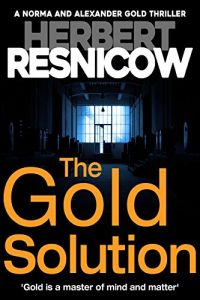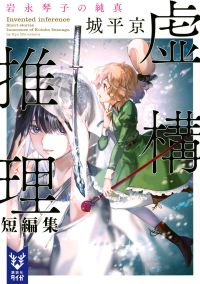This year, Kindaichi Hajime, grandson of the famous detective Kindaichi Kousuke, "celebrates" thirty years of solving mysteries! When the manga series Kindaichi Shounen no Jikenbo started in 1992, its creators couldn't have known that their puzzle plot mystery manga would become such a long-lasting hit, which would also leave a mark in the history of mystery fiction. As explained in the seminal Honkaku Mystery Comics Seminar, the publication of Kindaichi Shounen no Jikenbo, followed by Detective Conan two years later, was a true watershed moment, as they became big multimedia hits and paved the way for future puzzle plot mystery manga. If you're looking at the history of mystery fiction in Japanese popular culture, there's a period before Kindaichi and Conan and after. Kindaichi Shounen no Jikenbo in particular is an interesting case, because the manga was followed by a live-action adaptation relatively soon, which became a hit on its own and an icon in pop culture, making the franchise widely known beyond just a comic-reading audience. Both Kindaichi Shounen no Jikenbo and Detective Conan have became huge multimedia franchises with anime series, spin-off series, theatrical releases, drama CDs, novels, games and much more, but unlike Detective Conan, Kindaichi Shounen no Jikenbo does not have one continuous main manga series. It technically consists of multiple, shorter series, like the original series, the 20th anniversary series and Kindaichi Shounen no Jikenbo R, with sometimes one or two years rests between these. Nevertheless, the series has never really been out of the public eye in Japan in these thirty years, whether it is in manga form, television drama, games or something else. And at the moment, it doesn't seem the series will end any time soon, so let's hope for another thirty years of this giant in mystery history!
The current main manga series is called Kindaichi 37-sai no Jikenbo ("The Case Files of Kindaichi, Age 37"), and is set twenty years after the previous series, with a middle-aged Hajime working for the promotion/marketing company Otowa Black PR. Volume 13 was recently released, collecting the last chapters of the story The Killer with Twenty Faces which started in volume 11. Hajime's company is one of the companies involved in an grand Edogawa Rampo exhibition produced by none other than Araki Gou, better known as the Japanese Banksy. The hugely popular anonymous artist has reproduced a 1920s Tokyo inside a large event hall, themed after the works of Edogawa Rampo and even Hajime himself is impressed by all the references to Rampo's work hidden in the hall, from a Red Chamber of the same-titled short story to a reproduction of Rampo's own storage house. Hajime and his assistant Marin are responsible for a special preview event of the exhibition, with some of the guests including an influencer and a journalist. One of the attractions they visit during the tour is the Red Chamber: the first time they look at the chamber, situated on the other side of a courtyard, it's empty, but when they look at the chamber a few seconds later, they see one of the guests is sitting in a chair in the chamber, stabbed in the heart. They rush to the room and confirm the man's dead. Everyone else was together on the other side of the courtyard when they observed the empty chamber the first time and also when the body appeared, so nobody on the preview tour could've killed the man and placed his body in the chair. Leading to the question, who killed him? A message signed by the "Killer with Twenty Faces" (yes, that's a reference) direct the party to Rampo's storage, and when they arrive there, they find the doors locked. They unlock it with a special key carried only by the manager of the event, who had been with Hajime all the time, but when they look inside, they find another of the guests killed, strangled like the victim in Rampo's debut story The Case of the Murder on D. Hill. Hajime soon realizes this is a locked room murder, as the person holding the key had been with him all the time, so how did the Killer with Twenty Faces pull this off? When they learn they are locked inside the event hall, Hajime knows he has to solve this case quickly or else they might all end up dead in one of Rampo's works.This is most of all a fun story, I think. I am of course quite fond of Edogawa Rampo's work (disclosure: I have written the introduction to The Fiend with Twenty Faces), so the idea of an exhibition with a rebuilt "Rampo-esque" 1920s Tokyo full of Rampo references is just a really fun setting for a good old closed circle murder case, which is made even more interesting if you are aware that Yokomizo Seishi, the creator of Kindaichi Kousuke, knew Edogawa Rampo very well in real-life and even acted as his editor for some time. Anyway, the first murder definitely has the right amount of Rampo references I like: a body suddenly appearing in the Red Chamber, which is under observation by all the characters. Voyeurism is a big theme in Rampo's work, so to have an impossible situation hinging on the fact the characters witnesses the Red Chamber across the courtyard through binoculars and then having a body suddenly appear feels really like a Rampo-inspired situation. The second murder, in the locked storage, is perhaps less "Rampo-esque" despite it supposedly being themed after The Case of the Murder on D. Hill, but overall, I think this Rampo amusement park setting does a lot to sell the story. That is perhaps also why I think that the story works pretty well, even though the actual tricks behind the impossible murders aren't really mind-blowing. Some of the things pulled off by the killer in this story almost feel like a parlor trick, but you know, that's exactly the kind of tricks Rarmpo used in his works! Some of the tricks may feel very familiar and some of the fundamental concepts behind the trickery here have definitely been featured before in earlier Kindaichi Shounen stories, but in this particular context, in a story that is about murders being committed in what is effectively a Rampo story, I think they work perfectly fine. Volume 13 ends with this story perfectly by the way, so we'll have to wait for the next volume, though I am not really sure when that'll come out, because....
To celebrate the thirtieth anniversary of the series, a new manga series has started, titled Kindaichi Shounen no Jikenbo 30th, or The Case File of Kindaichi 30th, and this series takes us back to the "normal" timeline, with a seventeen year old Hajime and Miyuki. So it's basically the direct sequel to Kindaichi Shounen no Jikenbo R, which ended in 2017. I have to admit, after about four years of the 37-year old Hajime, it's nice to go back to the familiar format again. The story starts in the usual way, some chatter with fellow classmates like Souta, and then Inspector Kenmochi arriving to invite Hajime and Miyuki to some remote village: Yatagarasu Village is a place which will be erased from the maps in just a week because the nearby dam project will be finished, which will flood the village. Most people have moved out already, and the few remaining villagers are those who help coordinate the final days of the old village. Kenmochi wants to visit the village for a recently deceased friend: this fellow police inspector always regretted he never managed to solve a strange disappearance case in Yatagarasu Village a few years ago: the man had been threatened and was given police protection, and yet the man disappeared from his inn. Kenmochi, Hajime and Miyuki arrive at the same inn as the last tourist to visit the village and are also invited to attend the last ritual visit to Yatagarasu Shrine. The Yatagarasu, the mythological three-legged crow, is worshipped in this village, and for centuries, there's been a monthly ceremony which involves a visit tot the deepest quarters of the shrine. The participants all have to walk in procession as they go deeper and deeper in the shrine, which consists of five chambers. The doors to the first four chambers are locked by two different keys, carried by two different important figures of the village, while the last door is sealed with special ceremonial paper by the shrine maiden. The procession slowly proceeds through the shrine, opening each door after another, but when they arrive in the inner chamber, they find a decapitated head on the altar. The victim is the secretary of a former village council member, but how could the killer have placed this head here despite the five locked doors? The road to the village *happens* to be blocked too, so while they wait for police reinforcements, Hajime and Miyuki decide to help out the villagers cleaning the village before it'll be flooded, but then another decapitated head is discovered, but everyone in the village has an alibi for the murder. It is then they realize that according to legend, the Yatagarasu eats humans, but always leaves the head...Okay, this is just the set-up of the story, but for now, it feels like a classic Kindaichi Shounen story, and I'm perfectly fine with it! I like how The Case Files of Kindaichi, Age 37 sometimes gave us locations the old series didn't really have, but once in a while, Hajime just needs to end up in some isolated village or island with weird ceremonies! By the way, this first volume also has a limited edition, and I was kinda hoping for Original Video Animation DVDs like they had done in the past.... but the limited edition is basically just NFT marketing. You get a booklet with Hajime talking about NFTs, and an NFT. Sigh. The normal edition, it is!
Anyway, a lot of Kindaichi Shounen talk today, but even though the franchise is celebrating its thirtieth anniversary this year, it's clear the series is still going strong, with multiple running series and a brand new live action drama series. So you can rest assured that I'll be looking at Hajime's adventures in the future too. But while we're here anyway, let's all look back at thirty years of Hajime solving mysteries in the name of his grandfather! Feel free to leave comment on what some of your favorite stories are, your first encounter with the series, and all of things Kindaichi-related!
天樹征丸(原)、さとうふみや(画)『金田一少年の事件簿30th』第1巻















